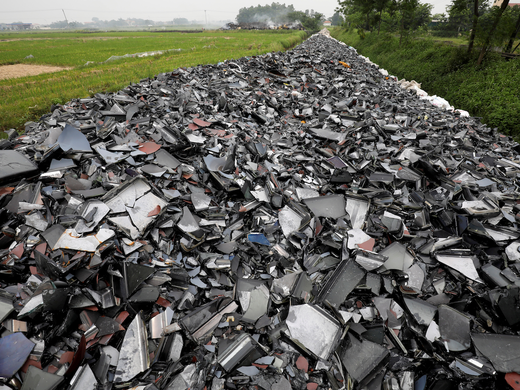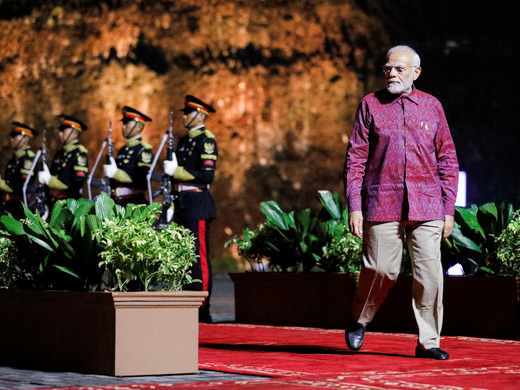The right to repair is gaining momentum globally. Most recently, California and the European Union announced repair legislation in October 2023 and April 2024, respectively, which will likely influence other jurisdictions to adopt similar practices.
Very simply, this is about the freedom to take apart, modify and fix software-enabled devices, either by oneself or using an independent repair shop, with original equipment manufacturers making the necessary spare parts, tools, repair manuals and diagnostic software available for reasonable prices. Canadians will have the opportunity to share their views on this matter as the government announced plans in its March 2024 federal budget for right-to-repair consultations beginning this June, as a precursor to legislation.
To kick-start this debate, I respectfully propose a right-to-repair agenda that draws from research in my co-authored (open-access) 2023 book The New Knowledge: Information, Data and the Remaking of Global Power for three principles.
First, the consultation should adopt a broad perspective on repair, as the issue affects a diverse array of interests, including aftermarket parts manufacturers, independent repair shops, small retailers of refurbished goods, disability advocates, activists concerned about e-waste and planned obsolescence, and ordinary people who want to fix goods themselves.
Second, crafting a right-to-repair agenda entails considering a wide range of products. For many, the right to repair is primarily associated with fixing cellphones or household appliances at independent repair shops. But it also has a bearing on automobiles, farming equipment, medical devices and military equipment.
As vehicles increasingly operate via software, a Canadian right to repair should include provisions for automobiles, including motorcycles, and farming equipment. For automobiles, the government should consider formalizing in legislation the voluntary repair agreement among major vehicle companies and independent repair shops known as CASIS (the Canadian Automotive Service Information Standard). CASIS’s shortcomings are that it does not include all manufacturers (Tesla, for example, opted out) and hasn’t been amended since its 2009 creation, despite advancements in vehicle technology.
Choice in repair is also important for Canadian farmers, given the cost and difficulty of access to manufacturer-authorized repairers, especially during brief planting or harvest seasons. Following Colorado’s agricultural right-to repair law, in effect as of January 2024, Canada should require farming equipment manufacturers to provide reasonable access to the parts, tools, documents and diagnostic software that farmers or independent shops need to fix agricultural equipment.
Alongside vehicles and agricultural equipment, Canada should also consider creating a medical right to repair. This would enable qualified technicians, including those working for hospitals, to repair vital medical equipment, such as powered wheelchairs, cochlear implants and ventilators. Wheelchair users should be able to patronize qualified independent repair personnel without the fear of losing warranties. Without access to independent repair locally, users must often send equipment to manufacturers to be fixed, which can result in critical machines being unavailable for long periods, a situation that arose with ventilators during the COVID-19 pandemic.
The right to repair has security and sovereignty dimensions, too. Military equipment increasingly operates via embedded software on which private-sector contractors can set restrictive warranty provisions. These rules can prevent repair by a country’s military personnel and deny them access to the technical data they need to diagnose and fix equipment. In the United States, for example, manufacturers prohibit military technicians from fixing the F-35 aircraft, meaning the military often has to ship the equipment back to the manufacturer, Lockheed Martin. Similar restrictions can be expected to affect the Canadian military as well, when it eventually begins taking delivery of these aircraft.
The right to repair has environmental and economic benefits, for the obvious reasons that it keeps devices out of landfills while keeping repair revenue in local economies. That leads to our third and final principle, which is to recognize that repair also has important knowledge benefits. Having the right to take things apart, and the tools needed to do it, means people can learn how things work and build skills that are foundational to innovation and knowledge.
Restrictions on repair, conversely, intensify knowledge asymmetries in which users, including consumers, hospitals or militaries, must depend on manufacturers’ products and repair expertise. In the case of the F-35, the US Government Accountability Office concluded in 2023 that, without access to manufacturers’ manuals and software, military repairers “not only cannot fix the part, but they cannot learn and understand how to fix the part.” One can envision similar knowledge barriers in other areas of restricted repair, such as health care and agriculture.
For smaller countries such as Canada, repair is a particularly vital issue, because so many devices, from phones to tractors, generally are manufactured abroad. That gives those companies the authority to decide how things can be repaired and by whom.
This is not merely a technical issue; it’s also a matter of national sovereignty. As such, it requires our political leaders’ urgent attention.



